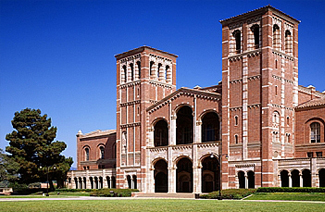2017年1月21日新阅读原文及写作分析!2017年1月份的新SAT写作考试文章话题是环保类的,这个话题也是比较热门的话题,很具有备考价值,所以大家可以借鉴一下真题的分析以及范文,总结一下写作手法。
文章原文:
1、Our first national park was named not after a mountain or forest but for a mighty river: Yellowstone. For centuries, the world’s waters have connected us. Explorers, traders, scientists and fishermen have traveled our oceans and rivers in search of new resources and a greater understanding of the world. This Wednesday, as we mark World Oceans Day, we must intensify our efforts to better understand, manage and conserve our waters and marine habitats if they are to remain a vibrant source of life for future generations.
2、Great progress has been made in protecting our environment over the past several decades, but too little of that progress addresses 70% of the world’s surface—our oceans. Less than one-half of 1% of the world’s oceans are protected in ways that will ensure they stay wild. Too often overharvesting depletes what should be a lasting bounty of fish. In some parts of the oceans today up to 90% of large fish are gone from natural ecosystems.
3、Our oceans are also where much of our trash and pollution end up. Plastics and other pollutants difficult to break down are killing fish, turtles and birds. Currents in the Pacific have created a plastic garbage dump twice the size of Texas. A few years ago, I visited Midway Island in the middle of the Pacific Ocean and was shocked to find debris killing birds that could not distinguish between plastic refuse and squid.
4、We are at risk of permanently losing vital marine resources and harming our quality of life. Overfishing and degrading our ocean waters damages the habitats needed to sustain diverse marine populations.Perhaps the most vital function our oceans serve is that of climate regulator — they produce oxygen, reduce pollution, and remove carbon dioxide. If we don’t protect our oceans, we could witness the destruction of some of the world’s most beautiful and important natural resources.
5、Fortunately, Yellowstone offers a blue print for protecting our oceans. President Ulysses S. Grant created Yellowstone National Park in 1872 at a time when large wild areas on the frontier were at risk. The founding of Yellowstone sparked a 50-year period during which many of the national parks we enjoy today were created. Our country began to see the value of setting aside large territories that would remain wild forever. Our national parks play an outsized role in maintaining healthy and diverse wildlife populations far beyond their boundaries. Many of the elk, deer and wolves seen throughout Western states trace their lineage to populations in Yellowstone.
6、In the early 1970s, the U..S. established a modest program to conserve some of its most important marine areas, called the National Marine Sanctuary System. In June 2006 and again in January 2009, the U.S. expanded the concept of parkland and wilderness preserves in the sea when President Bush designated four marine national monuments in the Pacific Ocean.
7、The first of these, the Marine National Monument, encompasses a 100-mile wide area of nearly pristine habitat northwest of Honolulu, Hawaii, and was named a Unesco World Heritage site in 2010. A second area, the Marianas Trench Marine National Monument, includes the world’s deepest canyon and is home to some of the oldest and most resilient forms of life on the planet. The other two monuments are the Pacific Remote Islands dispersed through out the Pacific Ocean and the Rose Atoll in American Samoa.
8、These four monuments cover more than 330,000 square miles and add up to the largest fully protected marine area in the world, larger than all of our national parks and wildlife refuges combined.They support vast numbers of fish, breathtakingly beautiful coral habitat, and a remarkable abundance of sharks—often seen as markers of an ecosystem’s health.
9、In the coming years, protecting our oceans will be even more important. Nearly half of the world’s population lives within 60 miles of an ocean, and that percentage will rise as more people settle in coastal communities. Today there are few waters outside the reach of human exploitation. Our wild ocean frontiers are disappearing and, like we did with Yellowstone, it is up to us to conserve the most important wild areas that remain. Doing so will preserve something that is all too easy to destroy but impossible to replace: natural, undisturbed incubators of life.
本文是2017年1月21日新SAT写作阅读原文及写作分析。
写作考试解析:
1.话题分类解析
从话题方面来看,这次的source text所涉及的内容是很多小伙伴的“熟面孔了”——着实不惊也不喜。掐指一算,在最早面世的OG两篇示范文章及四篇Practice里面的文章,就总共有三篇涉及环保话题,分别是“Plastic Bag Ban Bad for Freedom and Environment”,“Foreword to Arctic National Wildlife Refuge” 以及“Let There Be Dark”。而在过去一年的考试中,环保话题也是屡屡现身,包括5月和11月份北美卷,以及6月份和11月份的亚太卷。在接下来的考试中,环保类话题和教育类话题依旧是备考的重中之重,建议各位考生集中处理和强化练习真题中的环保话题。
2.论据分析
常见的论据种类,小伙伴应该也是耳熟能详的啦,包括个人经历personal experience/anecdote,事实与例子facts and examples, 研究数据data,权威人士或机构authority。考生们可以参考以上表格,在source text原文中找到各项论据。比如说从Para2开始就使用了醒目的数字,“….but too little of that progress addresses 70% of the world's surface—our oceans”,“Less than one-half of 1% of the world's oceans are protected in ways that will ensure they stay wild”。看到各种不同论据的存在是较简单的一个环节,但对于分析或者赏析作者手法完整的步骤来说,这也是最基础、技术含量较低的一步。像以上所引用的数据,我们还要看到这是“一组”数据,存着惊人的对比关系——占着地球表面约70%面积的海洋,其中只有不到“one-half of 1%”得到了应该有的保护。从某种意义上来说,这样一个戏剧性的对比,甚至可以构成一个situational irony。并且,我们也要看到句子中一些细微的内容,“…are protected in ways that will ensure they stay wild”,作者所希望海洋得到的保护绝对不是一般意义上的、泛泛的保护,而是能极大保存海洋本身原生态的保护方式。这篇source text当中除了数据,还使用了相当多的事实、例子以及权威,尤其集中在Para5-8还有Para10。
3.文章脉络
这篇source text的行文比较清晰利落。如果将文章的脉络梳理下来,可考虑这样划分。Para1为比较常规的introduction部分:引入主题,谈论背景吸引注意力,表明态度。接下来,作者阐述本话题论证的必要性——Para2-4表明海洋面积大、得到保护有缺失、海洋对自然系统的重要性。倒数第二部分,画风一转,强调海洋目前得到的保护正在进步中,列举四项里程碑事件及保护区的成立。最后的一部分,进行升华和深化——一方面强调,这是世界范围内共同致力的事业,“great minds think alike”;另一方面,呼吁不该止步于此,虽然保护在进行,但是海洋生态环境受到威胁的可能性也并没有随之减弱。
4.修辞和选词
各位考生可以参考表格内的归类。遵循了许多环保类文章的熟路子,作者也动不动就去扯动读者的神经,而这些手法也经常与选词和平行结构结合在一起。
如Para3 “…break down are killing fish, turtles and birds”, 又如Para4“If we don't protect our oceans, we could witness the destruction of some of the world's most beautiful and important natural resources”。作者抛上这样一些动物的名称来进行列举,在让读者感觉言之有物的同时,也会激发他们的同情。同时,考生需要对“If”这一词要有足够的敏感度,通常这个句子不是在强调某一事情的后果,就是在描画某一事物让人憧憬的影响,那就是我们可以去分析的appealing to emotions,包括了fear恐惧的感觉、expectation期待的感觉,又或者是sense of regret遗憾的感觉等等。
以上就是小编整理的2017年1月21日新SAT写作阅读原文及写作分析,按照这样的分析总结一下吧,希望给大家一定指导。

















